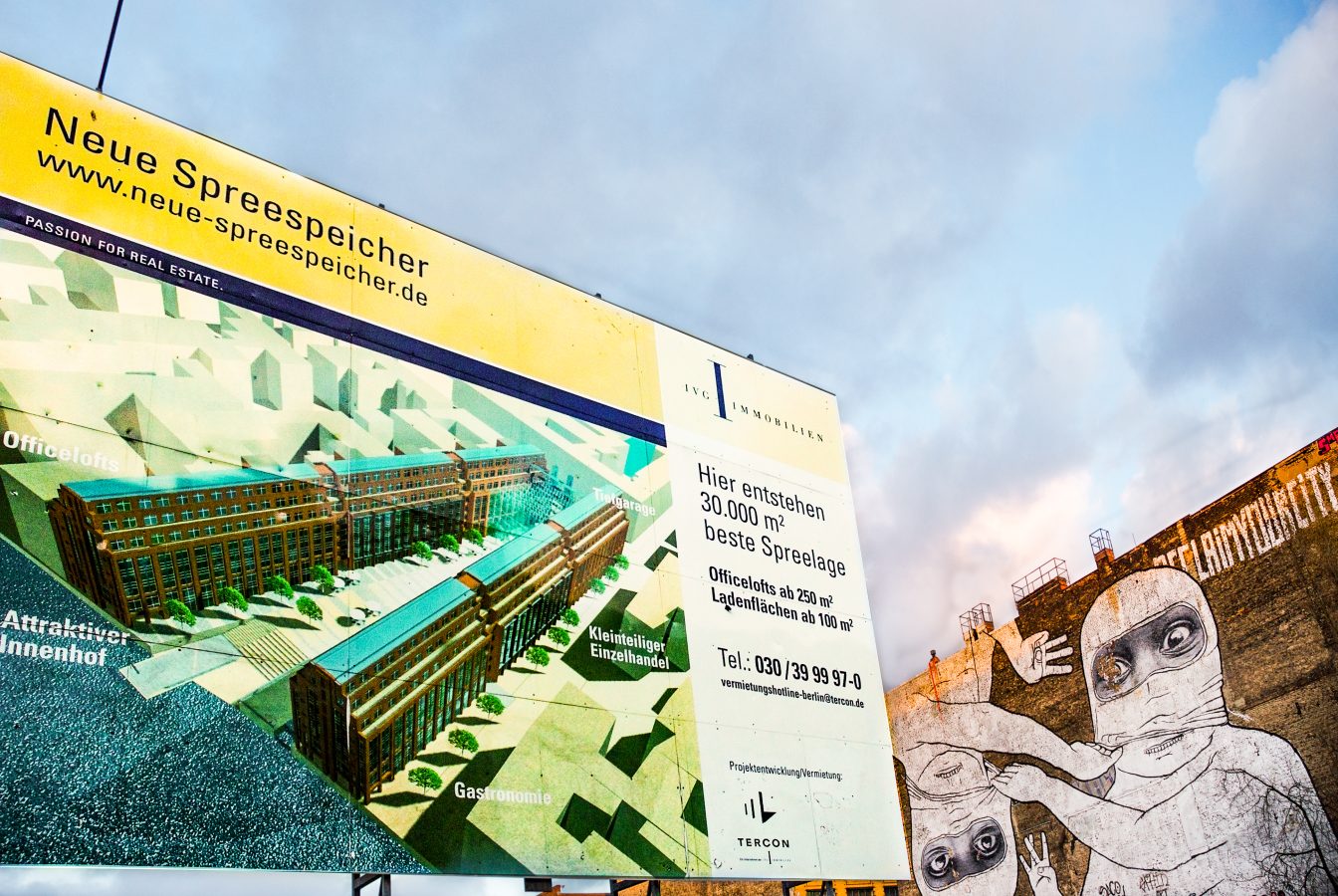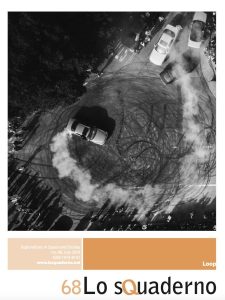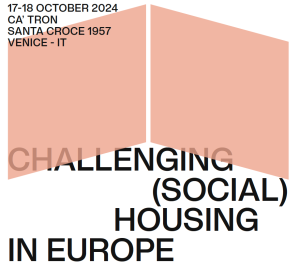By Sofia Borgogni
The Cuvrybrache for long time has been a contested piece of land in Berlin. It has a complex history, having been a bunker during World War II and after an abandoned zone bordering the Wall during the German division. Various attempts at redevelopment have been met with resistance from local residents and political actors starting from the late 1990s. In 2011, it was acquired by Artur Süsskind, a Berlin entrepreneur who aimed to turn it into a luxury complex, adhering to a broader renewal project that comprises the whole Spree riverbank. His plans led to peaceful protests being staged to claim the Cuvrybrache as a free space reserved for the common use of local residents. Meanwhile, the place gained a reputation among the German public and tourists alike for its alternative spirit and underground culture, as free-thinkers and artists settled in the abandoned land to give shape to creative initiatives and self-organized activities. Nonetheless, the tolerant environment attracted also marginalized and disadvantaged categories of people, such as refugees and the homeless, exacerbating issues of social deprivation, criminality, and poor standards of living. In 2016, after the evacuation of the area, construction works were ultimately authorized, allowing Süsskind to proceed with his development plans while including a gathering space for Kreuzberg residents. Despite compromises and changes, the question of the Cuvrybrache’s meaning and its impact on both marginalized groups and local residents remains unresolved.
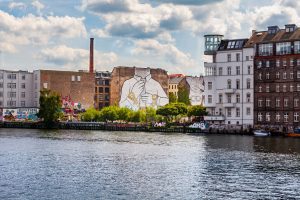
Like many other places in Berlin, the Cuvrybrache was penalized by its geographical position. It was first used as a bunker location during the Second World War, and, afterward, it became a liminal space due to its proximity to the West-East border. The old bunker and nearby magazines remained unused for years, even after the fall of the Wall, as the area was not attractive enough to be targeted by or included in projects of urban renovation. It was just at the end of the 1990s that the first attempts at taking over the Cuvrybrache were made, mounting tensions between political actors, external investors, and local neighborhoods. Several plans advanced for restructuring the land failed, as they were met with resistance and skepticism by both the locals and the municipality of Berlin: first, the opposition brought down the idea of building a Cuvry Center (a mall), then discontent emerged around the project of a residential complex, and, later, of a mobile lab for artists sponsored by the BMW and Guggenheim groups.

In 2011, the official ownership of the Cuvrybrache passed into the hands of the Berlin entrepreneur Artur Süsskind, who aimed to transform the deserted territory into a luxury spot comprising a hotel and housing estates, as part of a broader initiative designed by the Mediaspree group to refurbish the Spree riverbanks into an industrial and commercial hub. Again, local residents strongly manifested their grievances against such a proposal; giving life to the “Mediaspree Versenken” (Let’s sink the Mediaspree) initiative, they pressured political authorities to reconsider ongoing renewal plans by the imposition of a referendum for maintaining the territory as an open public space. However, in 2016, Süsskind could benefit from a compromise reached after years of negotiations and obtained the legal authorization to proceed with the construction works that had been paused since the early 2000s. In return, he had to include in the project of a “Neue Spreespeicher” the implementation of an urban element standing for what residents were striving for, i.e., a new event location and social gathering place of approximately 200 square meters reserved for Kreuzberg inhabitants. This agreement has seemed to solve incongruences between the parts involved in discourses concerning the Cuvrybrache, as residents have been able to carve out a place for themselves in the spirit of community-building ideals, that are becoming quite popular in defining new projects of urban development trying to account for a bottom-up perspective on urban issues.

However, the crucial question of who the new inhabitants of the Cuvrybrache are going to be still represents a major puzzle for locals. Indeed, behind attempts at realizing or protesting against the implementation of top-down projects, there is a strong symbolic collusion between the official owner of the Cuvrybrache and ordinary residents. The former can be labeled as a super-gentrifier, insofar as he stands out as the representative of an elitarian section of the population, able to purchase buildings or large pieces of land with the aim of developing or investing. His plans to make the Cuvrybrache a luxury residential area are part of a larger array of practices through which the new high-income classes produce material and symbolic boundaries to distinguish themselves from and be acknowledged as such by other groups. Gentrification of global cities is one such instrument since it creates and reproduces economic and/or cultural barriers by augmenting the distance between the rich and the poor. On the other side, local residents have kept opposing these forms of spatial encroachment over their neighborhood, claiming it as a space that must be designed to favor the common good of the people and nurture their sense of belonging. However, the creation of mixed areas – as the future Cuvrybrache will be – increases the risk of culture-led gentrification, which is a process generated by creative activities and lower classes being exoticized by cultural investors, who paradoxically pollute the nature of neighborhoods regarded as multi-cultural, lively and affordable.
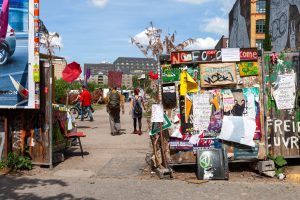
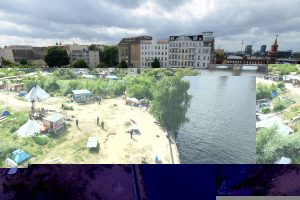
Moreover, these forces are not likely to be merely dichotomic, as there is often a third pillar in the structure of gentrification that emerges quite visibly in the case of the Cuvrybrache and it is associated with it becoming a peculiarly popular topic in public debates over the last 20 years. Caught in between external investors and residents are, in fact, those marginalized groups of actors who are ecologically deprived of any power to freely express their identity through the use of space. They coincide with the poorest fringes of the population like refugees, asylum seekers, homeless people, free thinkers, and anarchists. In 2011, these latter groups started squatting during the first peaceful protests staged against the commercialization of the land. The claim of a Free Cuvry soon attracted displaced individuals left with no other accommodation or living option.
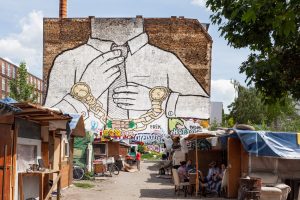
The incapability of resourceful actors to establish consensus over the legitimate use of the Cuvrybrache reinforced its conditions of stillness as a former wasteland, which slowly attracted all those categories of people who define themselves as individuals who either do not have or do not want a place in society. Hence, the Cuvrybrache soon gained a reputation as a place of refuge and alternative thinking, that best captures the contradiction of contemporary urban dynamics. While its informal inhabitants went through their daily routines – made of a bizarre combination of everyday mansions, creative exchanges, and micro-criminality episodes within a shantytown cosmo – tourists visited the site to catch a glimpse of the “true” underground Berlin. Combining street art and the libertarian spirit of self-sufficient creative initiatives, the Cuvrybrache was in fact the site of Italian artist Blu’s notorious graffiti painted all over the walls of surrounding buildings, offering tourists a nice picture to remember the essence of the city as an artistic hub, filled with opportunities for self-expression and alternative thinking. Find more about the famous Blu Graffiti and the emblematic story of its cancellation in the interactive story we created on NarrAbility.
However, beyond these quick snapshots, issues of social disadvantage, criminality, and hygiene grew exponentially, exacerbated by several measures pursued by the municipality and local residents complaining about the public degradation and the lack of safety around the area. In 2014, a fire was lit in the Cuvrybrache favela and many people who escaped were not allowed to go back to their shelters. This was the first step in the overall operation of clearing up the territory to free space for incoming works of renewal. Therefore, whereas a compromise was reached between the authorities and Süsskind, the issue of the meaning of a free and tolerant Cuvry remains. Stakes are still high for both those who keep being left behind by society and the residents themselves of the bordering neighborhoods of Friedrichshain-Kreutzberg, who cannot be granted a secure place in the territory they used to feel as their own.
Further information can be found:
Articles on Tagesspiegel; De Spiegel.
